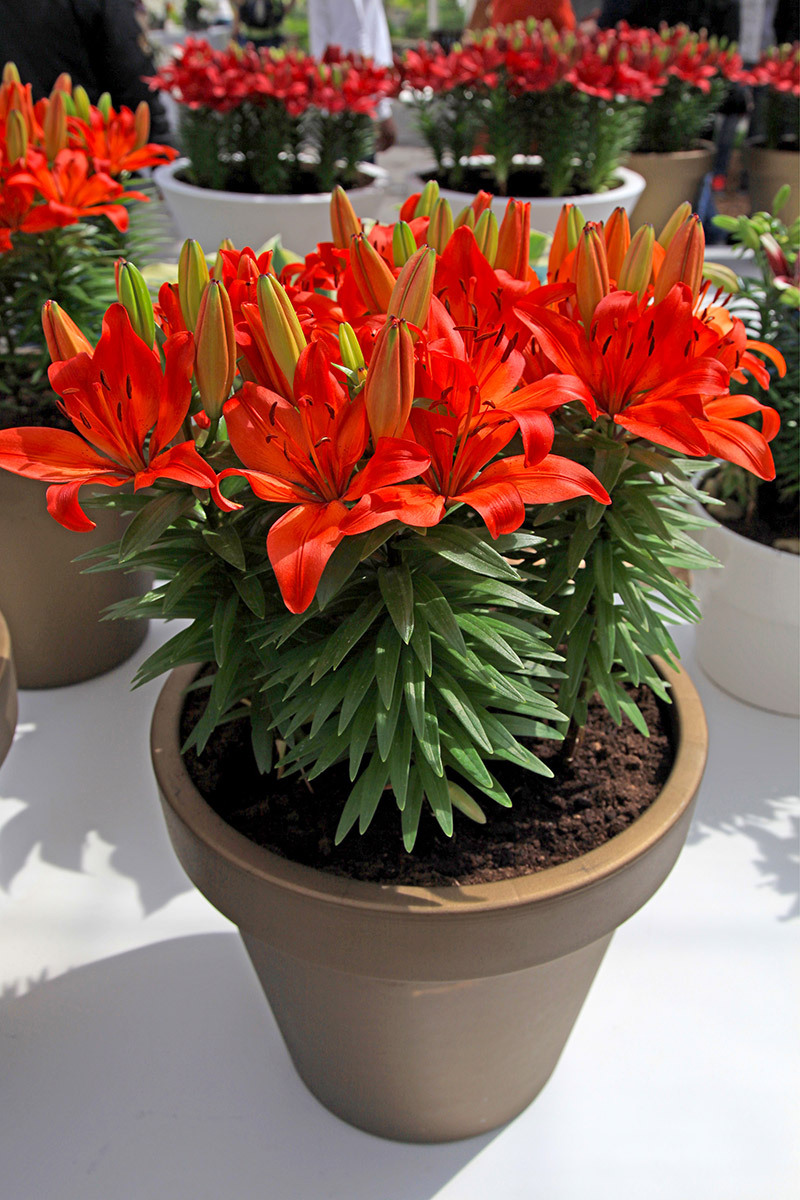The Ultimate Orchid Care Handbook for Enthusiasts
Posted on 18/08/2025
The Ultimate Orchid Care Handbook for Enthusiasts
Orchids are among the most captivating and diverse flowering plants in the world. With thousands of species and hybrids, they entice both novice and experienced gardeners alike. This Ultimate Orchid Care Handbook is designed specifically for orchid enthusiasts who wish to unlock the secrets to healthy, thriving blooms. Whether you're nurturing your very first phalaenopsis or you're an established collector of rare orchid varieties, this comprehensive guide covers everything you need for successful orchid plant care.
Why Orchids Are Beloved by Plant Lovers
Orchids offer unmatched elegance, colors, and shapes. Their exotic allure has made them a favorite in homes, offices, and botanical gardens around the globe. However, to the uninitiated, orchid maintenance can seem daunting. Understanding their unique needs unlocks a world of beauty and satisfaction for orchid hobbyists.
Fascinating Facts About Orchids
- Over 25,000 species worldwide make the orchid family (Orchidaceae) one of the largest plant families.
- Phalaenopsis, Cattleya, Dendrobium, and Oncidium are popular with home growers.
- Some orchids have blooms that last for months with proper care.
- Many species are epiphytic, meaning they grow on other plants in nature, not in soil.
- Orchids symbolize love, luxury, and beauty in cultures around the world.

Understanding Orchid Types
Before diving into orchid care essentials, it's important to know the different types of orchids commonly grown indoors:
- Phalaenopsis (Moth Orchid): Elegant, easy for beginners, with long-lasting flowers.
- Cattleya: Known as the "Corsage Orchid," prized for its showy, fragrant blooms.
- Dendrobium: Diverse group; some varieties are more challenging but have striking flowers.
- Oncidium: "Dancing Lady" orchids feature sprays of small, intricate blossoms.
- Vanda: Renowned for brilliant colors and large, waxy flowers.
Identifying your orchid helps you provide the best possible care and understand its growth habits.
Essentials of Orchid Care
1. Lighting Requirements
Light is a primary driver of orchid growth and blooms. Different species require varied light levels:
- Phalaenopsis: Moderate, indirect light (east or west window).
- Cattleya: Bright light, some filtered sun is ideal.
- Dendrobium: Bright, indirect light.
- Oncidium: Bright, filtered light.
Tip: If new leaves are dark green, your orchid may not be getting enough light. Reddish tinges can indicate too much exposure.
2. Watering Your Orchids Correctly
Proper watering is critical and overwatering is the most common cause of orchid trouble:
- Water only when the potting medium feels dry to the touch.
- Use room-temperature, non-softened water.
- Ensure pots have drainage holes for thorough draining.
Important: Avoid letting your orchid sit in standing water. Root rot occurs quickly when roots are suffocated by excess moisture.
3. Humidity and Air Circulation
Orchids thrive in humid environments--ideally between 40-60% humidity. Low humidity can cause buds and leaves to shrivel.
- Use a humidity tray or a room humidifier in dry climates.
- Group plants together to increase local humidity.
- Gentle airflow helps prevent fungal and bacterial issues.
4. Temperature Preferences
Most orchids prefer intermediate temperatures:
- Day: 65-80?F (18-27?C)
- Night: 55-65?F (13-18?C)
Some species require a temperature drop at night to trigger blooming. Monitor temperatures during seasonal changes for healthiest results.
5. Choosing the Right Orchid Potting Mix
Unlike most houseplants, orchids don't grow in regular soil. Use specialized orchid mixes that suit your plant's needs:
- Bark chips - For epiphytic species like Phalaenopsis and Cattleya.
- Moss (Sphagnum) - Good for retaining moisture for thirsty varieties.
- Perlite and charcoal - Add aeration and help with drainage.
A quality orchid potting mix keeps roots healthy and prevents rot.
Repotting Orchids: When, Why, and How
Repotting is a fundamental part of orchid maintenance. Most orchids should be repotted every 1-2 years, typically after blooming. Watch for these signs:
- Decomposed or compacted potting media
- Roots growing out of the pot
- Declining plant vigor or persistent wilting
Steps for Repotting an Orchid
- Remove the plant from its pot and gently shake off old media.
- Trim away dead or mushy roots with sterile scissors.
- Place in a clean pot with fresh orchid mix, positioning roots gently.
- Water lightly and avoid fertilizing for two weeks afterward.
Remember: Don't reuse old potting mix! It may harbor disease or pests.
Fertilizing Orchids for Maximum Health and Blooms
Proper orchid fertilization supports vibrant foliage and spectacular flowers. Use a specialized, balanced orchid fertilizer, and follow these tips:
- "Weakly, weekly"--use a diluted solution (at 1/4 or 1/2 strength) every week or two during active growth.
- Flush the pot with plain water once a month to prevent salt build-up.
- Reduce or halt feeding during the plant's winter dormancy period.
Never fertilize dry roots! Always water your orchid before applying fertilizer to avoid root burn.
Common Orchid Problems and Solutions
Even experienced orchid hobbyists encounter occasional issues. Let's address the most frequent orchid troubles and strategies for healthy plants:
Pest Issues
- Aphids, mealybugs, spider mites: Remove by gently washing leaves with warm water or using insecticidal soap.
- Inspect new plants before adding them to your collection to avoid infestations.
Disease and Rot
- Root rot is caused by overwatering. Let media dry out and trim affected roots.
- Leaf spots or soft patches indicate fungal or bacterial disease. Remove affected areas and improve airflow.
- Always sterilize tools to prevent spreading disease between plants.
Bud Blast and Failure to Bloom
- Low humidity, sudden temperature drops, or overwatering can cause buds to shrivel and drop.
- If orchids refuse to bloom, try increasing light levels and ensure they experience a slight temperature drop at night.
Advanced Orchid Care Techniques for Enthusiasts
Ready to take your skills to the next level? Let's explore a few advanced methods for the dedicated hobbyist:
- Division: Mature orchids with multiple growths can often be divided to produce new plants. Use sterile tools and allow cuttings to dry before potting.
- Propagation: Some types, like Dendrobiums and Phalaenopsis, can be propagated from keikis (baby plantlets).
- Special environments: Use grow lights, humidity chambers, or terrariums for rare, exotic orchid species.
- Experiment with mounts: Epiphytes can be grown mounted on cork bark to mimic their natural habitat.
The Orchid Enthusiast's Seasonal Care Calendar
Understanding the orchid's seasonal rhythm helps you provide exactly what your plant needs year-round:
Spring & Summer
- Most orchids enter their active growth phase--water and fertilize more frequently.
- Increase humidity and ensure plenty of indirect light.
- Repot after blooming if needed.
Autumn
- Some species begin to slow growth; reduce watering and feeding slightly.
- Monitor for pests as temperatures change.
Winter
- Many orchids rest, requiring less water and little to no fertilizer.
- Maintain humidity; avoid drafts and keep away from heater vents.
- Watch for flower spikes on winter-blooming types, like Phalaenopsis.
Frequently Asked Questions About Orchid Care
- Q: Can orchids grow in standard potting soil?
A: No, orchids need special mixes to provide adequate airflow and drainage to their roots. - Q: How long do orchid flowers last?
A: Depending on the type, blooms can last from several weeks to several months with proper care. - Q: Is tap water safe for orchids?
A: It depends on your water quality--avoid softened or heavily chlorinated water. Distilled or rainwater is often best. - Q: When should I cut back an orchid flower spike?
A: For Phalaenopsis, after flowers drop, cut just above a node to encourage reblooming. For other species, cut the spike back to the base.

Top Tips for Thriving Orchids
- Observe regularly: Inspect leaves, roots, and flowers for signs of stress or pests.
- Patience pays off: Orchids reward consistent, attentive care.
- Learn your species: Each type has unique needs, so research your plant for best results.
- Don't be afraid to experiment: Track what works best for light, watering, and repotting.
- Connect with community: Join local orchid societies or online forums for support and inspiration.
Conclusion: Embrace the Orchid Journey
With this comprehensive orchid care handbook, you have the knowledge and confidence to keep your orchids healthy for years to come. Remember, even the most experienced orchid enthusiasts face challenges now and then. With patience, curiosity, and the willingness to learn, your collection will thrive and delight you with jaw-dropping blooms.
Happy growing, and may your ultimate orchid adventure bring endless beauty to your home!
Latest Posts
The Ultimate Orchid Care Handbook for Enthusiasts
Celebrate a Birthday with Stunning Floral Arrangements
Blossom into Your Best Self: Finding Your Floral Counterpart





